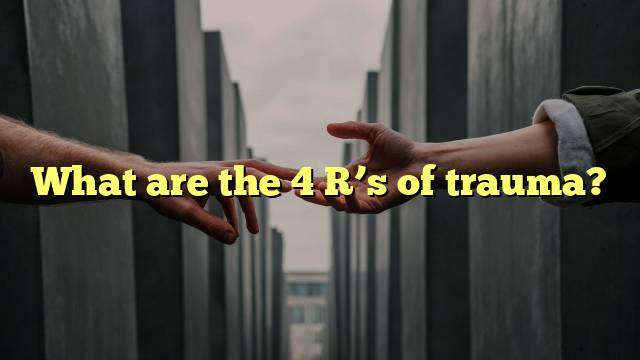Understanding the Four R’s of Trauma
Trauma is a difficult experience to process and understand. The effects of trauma can be long-lasting and debilitating, and can affect not just an individual, but entire communities. That is why the trauma-informed approach is so important – it helps to recognize, respond to, and prevent further trauma from occurring.
The trauma-informed approach is guided four assumptions, known as the “Four R’s”: Realization about trauma and how it can affect people and groups, recognizing the signs of trauma, having a system which can respond to trauma, and resisting re-traumatization. It is important to understand each of these four R’s in detail in order to effectively create a trauma-informed approach.
Realization about trauma
The first R stands for “Realization”, which means understanding that trauma can occur and how it can affect individuals and groups. Trauma is not just a mental health issue, but is often linked to physical health issues as well. Trauma can lead to physical pain, mental health problems, and even physical disabilities. It is important to understand how trauma can manifest itself and how it can affect those around us.
It is also important to understand how trauma can affect communities. Trauma can lead to distrust in institutions and systems, social isolation, and even violence. It is important to be aware of how trauma can impact communities and to create systems that can help to prevent further trauma from occurring.
Recognizing the signs of trauma
The second R stands for “Recognizing”, which means understanding the signs of trauma. Trauma can manifest itself in a variety of ways, such as increased anxiety and depression, changes in behavior, and physical changes. It is important to be aware of the signs of trauma so that individuals can get the help they need. It is also important to be aware of the signs of trauma in order to prevent further trauma from occurring in the future.
Having a system which can respond to trauma
The third R stands for “Responding”, which means having systems in place which can respond to trauma. This can include having trained professionals who are able to provide trauma-informed care, as well as having systems which can provide support and resources to those affected by trauma. It is important to have systems in place which can effectively respond to trauma and provide the necessary help to those affected.
Resisting re-traumatization
The fourth R stands for “Resisting”, which means creating systems which can prevent re-traumatization. This can include having systems in place which can help to provide support and resources to those affected by trauma, as well as creating policies and procedures which can help to prevent further trauma from occurring. It is important to have systems in place which can effectively prevent re-traumatization and provide the necessary help to those affected.
Understanding the four R’s of trauma is an important part of creating a trauma-informed approach. It is important to understand each of these four R’s so that individuals can get the help they need, and systems can be put in place which can respond to trauma and prevent further trauma from occurring. By understanding the four R’s, individuals and communities can create a more trauma-informed approach and help to create a healthier and more resilient society.



